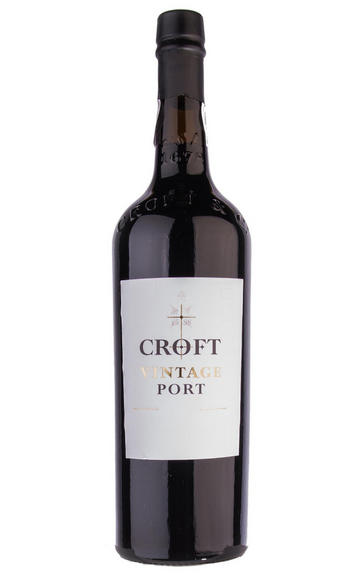
2003 Croft, Port, Portugal
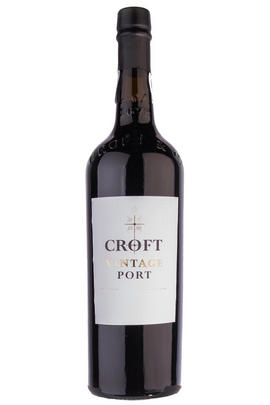
Critics reviews
The 2003 Vintage Port is a field blend bottled in 2005 after 21 months in wood. It comes in with 85 grams of residual sugar. Although an oldie, this is about to be re-released. Gorgeous, this obviously once had bold and upfront fruit. It still does to some extent, but now you get more nuance and maturity and a big hit of complexity.
That's not to say this is too old. In fact, it is rather youthful in many respects, with a couple of decades of life left. There sure is no rush to consume it, and it may do even better than indicated. In the meanwhile, you get something with some maturity and complexity at a very nice price. This is a great deal.
Drink 2022 - 2055
Mark Squires, Wine Advocate (August 2022)
Dark ruby. A little muddy on the (not very intense) nose. Very sweet palate entry, and a bit of pruney, slightly overripe fruit on the palate. Fairly loose structure, but you wouldn’t turn it away! Brûlée and a bit hot on the end.
Drink 2020 - 2035
Jancis Robinson MW, JancisRobinson.com (May 2018)
Chocolate, walnut and ripe berry aromas, with some figs and plums showing the heat of the vintage. Full-bodied and very sweet with dried fruits and a softness and lusciousness. Shows the unique character of the base of the blend, Quinta do Roeda. Drinking beautifully now but can improve with age.
It's just starting to open.
James Suckling, JamesSuckling.com (February 2023)
Bright, saturated ruby. Brooding aromas of bitter cherry, violet and liquorice, lifted by a resiny nuance. Then densely packed, concentrated and fresh, with rich, fleshy kirsch and dark chocolate flavours. It finishes with big, broad, thoroughly ripe tannins and very good lingering black cherry fruit. This is surprisingly easy to taste today but should age well on its ripe tannins and sheer balance.
Stephen Tanzer, Vinous.com (January 2006)
It is still tight-knit but with underlying definition, fruit and intensity, a touch of tar and spice reflecting the heat of the vintage. Wonderful purity of fruit on the palate initially, backed by powerful spicy tannins with great definition on the finish. Just about ready to drink, huge promise.
Drink 2019 - 2050
Richard Mayson, Decanter.com (November 2019)
About this WINE
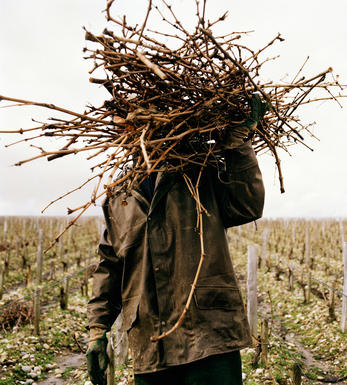
Croft
Croft has to be one of the most distinguished names in the Port industry. Founded over 300 years ago by a Yorkshireman, John Croft, who was one of the intrepid band of merchants to export wines to a British market unable to buy from Napoleonic France due to war. The firm’s activity dates back to 1588 which was also the first year of the first ever recorded shipments of Port wine.
John Croft published his treatise on the Wines of Portugal in 1788 which subsequently placed the Croft family at the forefront of the British community based in Oporto. This treatise gives a valuable insight into the early days of the Port Wine Trade.
In 2001 Croft was sold to the Taylor-Fladgate Fonseca group with Adrian Bridge as current managing director. There are no longer any members of the Croft family in the firm and like other famous names; Croft has in recent years become swallowed up by multinationals, though the brand remains strong as they retain their own distinctive style and identity. The Croft family maintained its affection for the fortified wines of the Douro and the late Percy Croft famously stated “Any time not spent drinking Port is a waste of time.”
Quinta da Roêda was planted early in the eighteenth century during a great surge in demand for Port after the 1703 Methuen Treaty in which England agreed to tax a third less on Portuguese wine than on French wine. Subsequently Quinta da Roêda has been recognised as one of the great Port vineyards and nineteenth century poet Vega Cabral is to have said: “If the wine district were a golden ring, Roêda would be the diamond.”
The vineyard draws its character from new Port making technologies as well as maintaining it’s commitment to traditional foot treading for its vintage Port wines, producing full and fruity Port.
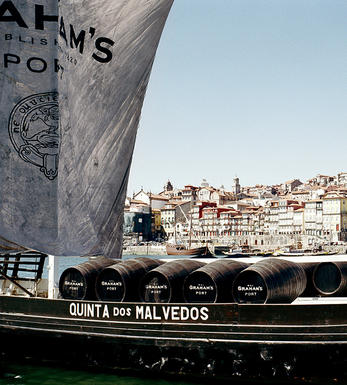
Vintage Port
Vintage Port accounts for only a small percentage of the total Port production - which includes Tawny, Ruby, Late Bottled Vintage, Single Quinta Vintage styles, among others - but is the finest, longest-lived and most expensive style that is produced. The best are as good as any wine in existence.
With the exception of legendary vineyards like Quinta do Noval Nacional and Quinta do Vesuvio, Vintage Port is made from a blend of wines from a producer's finest plots. It is aged for around 18 months in wooden casks before bottling; from then on the watch-word is patience. At least 15 years ageing – and for the top wines it will be significantly longer – is required before the tannins, spirit and fruit are fully integrated. Indeed, the finest examples can last well over 50 years.
Vintage Port is only made in exceptional years (normally around three times per decade) with considerable stylistic variation between different years and shippers. However, they all share a sweet, warming, spicy richness, power and complexity. In other good but not great vintages, many shippers produce a Single Quinta Vintage Port from their finest vineyard. These are made in the same way and have the same style as Vintage Port but tend to mature faster and are less profound. All Vintage Port throws a sediment as it matures, and thus requires decanting.
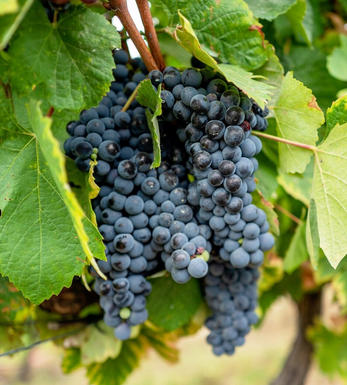
Port Blend
There are around 40 different grape varieties permitted in the production of Port - however the vast majority of Ports are produced from a blend of 5 grapes - Touriga Nacional, Touriga Francesca, Tinta Barroca, Tinta Roriz, and Tinto Cão.
Touriga Nacional produces small, dark-skinned grapes that produce opaque black wines of great extract and high tannins - it gives grip, body, and structure to the blend.
Touriga Franca has a thinner skin and consequently produces wines lighter in colour and tannins than Touriga Nacional. It contributes fruit, aroma, suppleness and roundness.
Tinta Roriz is the Portuguese name for Tempranillo and its high sugar content and low acidity contribute colour and fruit.
Tinta Barroca which is normally grown at highish altitudes and on north-facing slopes, is prized for producing wines of delicacy, finesse and with smooth, velvety fruit. It brings elegance and sweet, ripe fruit to the final blend.
Finally Tinto Cão produces fine and complex wines, though it is probably the least important of the 5 grapes as its painfully small yields have reduced plantings to almost insignificant levels.


Buying options
Add to wishlist
Description
The 2003 Vintage Port is a field blend bottled in 2005 after 21 months in wood. It comes in with 85 grams of residual sugar. Although an oldie, this is about to be re-released. Gorgeous, this obviously once had bold and upfront fruit. It still does to some extent, but now you get more nuance and maturity and a big hit of complexity.
That's not to say this is too old. In fact, it is rather youthful in many respects, with a couple of decades of life left. There sure is no rush to consume it, and it may do even better than indicated. In the meanwhile, you get something with some maturity and complexity at a very nice price. This is a great deal.
Drink 2022 - 2055
Mark Squires, Wine Advocate (August 2022)
wine at a glance
Delivery and quality guarantee